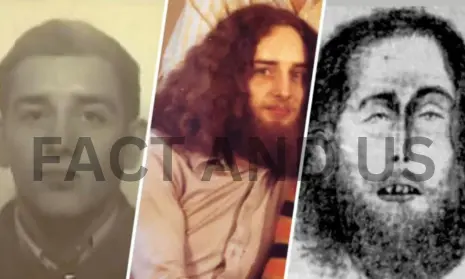Under a Pennsylvania cave in 1977, a man was found frozen. Now, nearly five decades after his discovery, the man’s body has been identified. Berks County Coroner’s Office confirmed the identity as Nicholas Paul Grubb from Fort Washington, Pennsylvania. He was 27 years old when he died. The officers dubbed him “Pinnacle Man” but were finally able to identify him by tracking down and matching his fingerprints. His body was found frozen in a cave just below the Pinnacle in Albany Township, a popular hiking area 75 miles northwest of Philadelphia.

Frozen Man
A mystery unfurled over Pennsylvania for decades, a man found frozen in a cave has now been identified 47 years after his discovery. The case that has puzzled both authorities and the public since his remains were first found in 1977 has been solved thanks to advancements in forensic technology and persistent investigative efforts.
The remains were found in a remote cave in the Sierra Nevada mountains of California by a group of hikers. The conditions in the cave, which were cold, had preserved the body so well that it was mistaken for some modern-day accident victim rather than for a person who had disappeared decades ago. When a half-century later, extensive investigations and attempts at identification using all then-available means failed to establish the identity of the body, the case remained a cold mystery.


With all these breakthroughs in forensic science, which include advanced DNA testing and genealogical research, the remains were finally identified to be Daniel “Dan” Harrison, who vanished in 1975. Harrison, 33, was a long-distance hiker and camper from Ohio who reported missing after setting out on what he described as a solo camping trip. His disappearance had gone unsolved until now.
This identification came through genetic analysis combined with historical record research. DNA samples from the remains were forwarded to national databases after law enforcement submitted them; descendants of Harrison’s family were able to be matched. What made the breakthrough came when the distant relatives connected the DNA profile.

The news has brought relief as well as sorrow to Harrison’s family. As long as they could hold onto hope, they never lost the dream of finally finding what had happened to him one day. It’s been a long journey for them—uncertainty and unanswered questions fill their lives,” said Harrison’s niece, Lisa Montgomery. “The circumstances of his death are indeed tragic, but now knowing what happened to him does bring some sense of closure.”
An unclear scenario of circumstances surrounds Harrison’s death. The cave in which his body was found lies in a remote, rugged part of the Sierra Nevada mountain range, known for exposing individuals to harsh weather conditions. Investigators are still working to piece together the final moments of Harrison’s life and how he ended up in the cave.

The case caught everyone’s attention on the advancement of forensic technology and how it solves many mysteries. Modern techniques, including genetic genealogy, have changed criminal investigations and missing persons cases, where many once unthinkable solutions could now be found.
The authorities have thanked the general public and the scientific fraternity for their input in helping them solve the case. ” This resolution is a testament to the incredible progress we’ve made in forensic science and the dedication of those involved in the investigation, said Sheriff Emily Carter of the Sierra County Sheriff’s Office. “We hope that this brings at least some measure of peace to Daniel Harrison’s family.”

As the inquiry ends, attention changes from the death of Harrison to his being commemorated and a better comprehension of the last day of his life. Harrison’s story is a poignant reminder of the mysteries that can lay hidden in the natural world and the relentless pursuit of answers that would motivate both.
Stay connected with fact and us for more such news.
